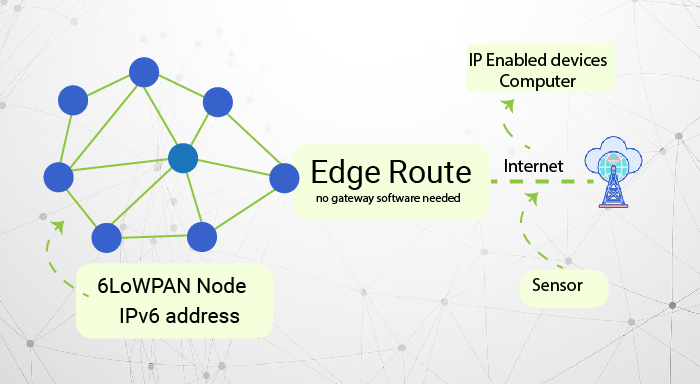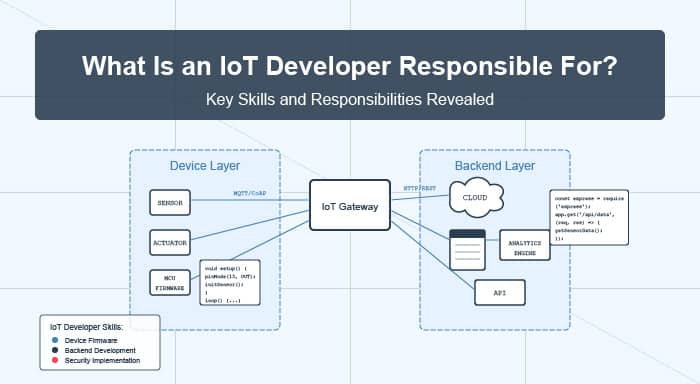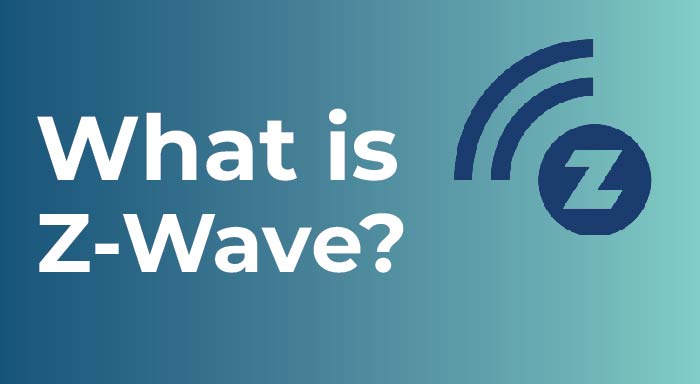In recent years, the amount of connected devices through the IoT network has increased dramatically, and managing connectivity is essential. 6LoWPAN in IoT is a protocol motivated for this kind of usage. Also known as IPv6 over Low Power Wireless Personal Area Networks, 6LoWPAN allows small devices to work on extensive telecommunications networks using a negligible amount of power.
In this blog, we’ll explore the specifications, role, and usage of 6LoWPAN in more detail.
What is 6LoWPAN In IoT?
6LoWPAN in IoT, short for IPv6 over Low power WPAN, is a network protocol that sanctifies IPv6 for low power, low data rate mesh networks. In other words, it allows any device, including those that are the least powerful, to communicate using IP protocols, which are the very foundation of the Internet’s messaging structure and scalable architecture. It also allows addressing different parts of the IP-based Internet as well as directly interacting with clouds.
Key Features of 6LoWPAN
1. Packet Compression:
Another major feature of 6LoWPAN is its packet size of IPv6 packets to be significantly smaller. This compression enables these packets to be contained in the small bandwidth and size of networks that employ IEEE 802.15.4 frames, which are considerably smaller than internet connections.
2. Fragmentation:
When packets are larger than the term ITTI IEEE 802.15.4 frame, 6LoWPAN fragments these packets as well as makes certain that they are reconstructed with minimal loss in data transmissions.
3. Mesh Networking Support:
6LoWPAN in IoT also ensures that wireless mesh networks are formed by not only the router but other devices also. This aids in the coverage extension and also duplication, which plays a central role in ensuring IoT networks ‘connectivity in the ever-changing environment.
Why is 6LoWPAN Important?
Energy Efficiency:
Six low packet networks were designed with the energy in consideration and therefore ideal for use in battery-powered devices which will therefore last longer when in use, some of the applications that will be suitable include remote field IoT sensors and smart home devices which can hardly be reached for battery replacement as frequently as may be required.
Scalability:
Using IPv6 addresses strengthens point-level networks with nearly unlimited address space, something needed for the IoT connections that are anticipated to reach billions of devices.
Interoperability:
Due to the use of standard IP protocols in 6LoWPAN integration with IT infrastructure and other IP networks is relatively easy and this enables interconnectivity of different devices and networks.
Cost Effectiveness:
With saving and streamlining with existing IP standards and keeping the network design simple, the 6LoWPAN in IoT leads to low development and ongoing expenditure to make it more acceptable to the commercial and industrial world.
Applications of 6LoWPAN
Smart Homes:
When implemented in home settings, for instance, 6LoWPAN effectively links smart thermostats, light sensors, and security systems so that all the home’s operations can be controlled from a distance using applications, and voice commands.
Industrial Automation:
In manufacturing industries, 6LoWPAN allows various sensors and control devices that govern equipment within factories to be connected, and effective management of such equipment is enhanced by monitoring and predictive maintenance applications.
Agriculture:
In smart irrigation using IoT and farming, 6LoWPAN can facilitate the placement of habilitating sensors that measure aspects of the environment that may include moisture and temperature of the soil for purposes of determining the best farming practices to use.
Smart Cities:
6LoWPAN in IoT involves low-energy solutions with a connection at scale, thereby making it particularly suitable for use in urban environments where traffic lights, public transport informing, and environmental sensors are put to use.
Technical Architecture of 6LoWPAN
Adaptation Layer:
This is a key layer in the 6LoWPAN communication protocol in the IoT stack that is charged with the task of fragmentation and reassembling IPv6 packets to suit the low-power, low-data rate networks in question. It does header compression, packet framing, and routing which is crucial for data transfer and transmission.
Routing Protocols:
Such protocols as RPL which is a Routing Protocol for LowPower and Lossy Networks is employed in the management of data paths. These protocols help save energy while at the same time promoting a high rate of data delivery.
Security Features:
Lightweight is another advantage of IPv6; however, it is possible to increase security by using features of IPv6 such as IPsec and higher layer security to guarantee data security.
Challenges and Developments
6LoWPAN has more advantages to the network and on the other side, the disadvantage of the protocol is the following problems because of the lightweight system: Since IoT devices are relatively prone to cyber threats, the research and development priorities are to improve the security experience with minimal excess resource utilization.
Additionally, with an increasing number of registered IoT ecosystems, there remains the need for enhanced integration of 6LoWPAN into the current complex networks and systems.
Conclusion
To sum up, 6LoWPAN in IoT is the critical component making IoT easily scalable and effective on some devices. Subsequently, technology has been identified to remain an essential factor for shaping new endeavors and enhancing the efficacy of operations in divergent sectors.
FAQs for 6LoWPAN in IoT
1. What is the role of 6LoWPAN in the IoT framework?
6LoWPAN in IoT is designed to support IPv6 protocols to networks with Low power and low data rate, the system makes small battery-operated devices and sensors interconnect to the internet and have efficient communication.
2. How the use of 6LoWPAN can help in reducing energy consumption.
Through packet loss and transmission protocol reduction, 6LoWPAN enables IoT devices to utilize less power in a transmission process hence saving their battery power.
3. Is 6LoWPAN suitable for long-range communication?
6LoWPAN is intended for short-range communication only but data can be transmitted over long distances relaying through multiple nodes by mesh networking.
4. Is 6LoWPAN secure?
Almost all network structures can add security protocols such as at layer 3 the Internet Protocol Security at a higher level giving 6LoWPAN in IoT a germ of security to protect the data transferred by the framework.
5. Which sort of devices typically incorporate 6LoWPAN?
Advanced devices such as IoT sensors, actuators in IoT, and control devices in smart homes, industries, agriculture, and smart city infrastructure use 6LoWPAN for connectivity and data transfer.
Related Reads
Logical and Physical Designs of IoT
IoT Communication Protocols | How Do IoT Devices Interact?
IoT Vs M2M | Understanding the Key Difference
Exploring Cellular Communication Protocol in IoT | Enhancing Connectivity and Efficiency



